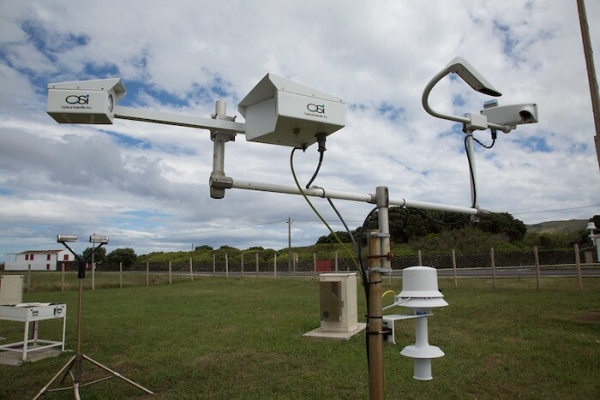A new $620,000, three-year grant from the U.S. Department of Energy will enable a University of Kansas atmospheric scientist to research how aerosols, clouds and precipitation interact over ocean waters, with the goal of producing more accurate Earth System Models.
Lead researcher David Mechem, professor and chair of geography & atmospheric science at KU, will use a wide array of data collected at the Atmospheric Radiation Measurement Program (ARM) facility on Graciosa Island in the Azores, a region of the eastern North Atlantic known for ample marine low-altitude clouds. While previous research has examined how aerosols influence radiation and precipitation, Mechem said his work will be among the first to parse in such detail how precipitation and other processes in turn influence aerosols in the atmosphere.
“The act of precipitation forming and then falling — it acts to remove the aerosol from the atmosphere,” Mechem said. “Even just a rainstorm cleans it out. You know how everything seems so clean and pristine after it rains? We call it aerosol processing or coalescence processing, this removal of aerosol from the precipitation process. What happens, then, if you try to get new cloud formation, you're going to be dealing with a very different aerosol environment. That's going to have implications for the brightness of the clouds that form and how prone they are to precipitation. We’ll be studying the backside of that aerosol-cloud-precipitation interaction loop. It's something that hasn’t been studied much, and it's important to understand, fundamentally, what governs that process.”
Read more at University of Kansas
Image: Instrumentation at the ARM facility in the Eastern North Atlantic on Graciosa Island off the coast of Portugal where a KU researcher will show how precipitation influences atmospheric aerosols. (Credit: U.S. Department of Energy Atmospheric Radiation Measurement (ARM) user facility)


